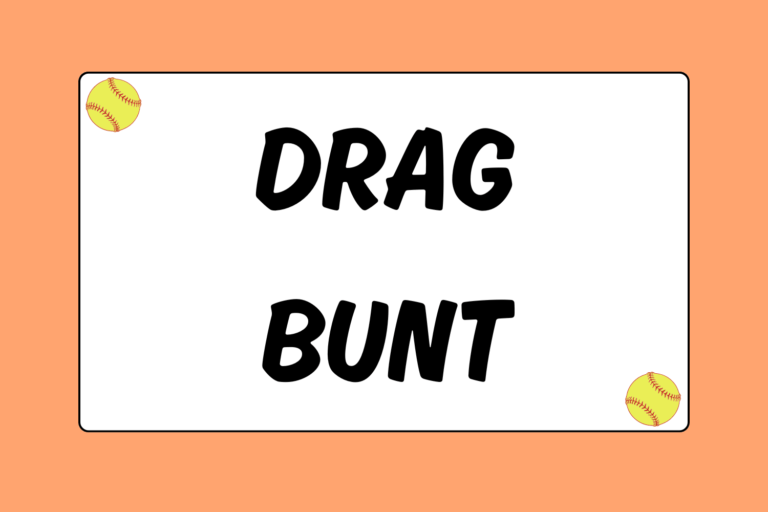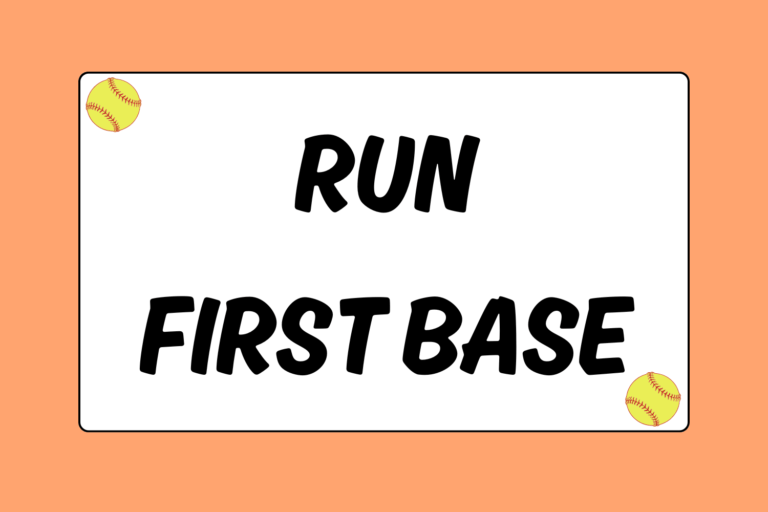Sliding and diving are the best ways to miss the tags when stealing bases, or anytime there’s a close play. It’s fast, it’s efficient, and it looks pretty good too!
There are four basic slides that every softball player should learn and utilize. This guide will give you the tips you need to gracefully slide or dive into any base on the diamond.
Basic Sliding Technique
The basic slide is most common among young players. It gets you low and to the base, and there is nothing too fancy about it. As with any slide, always sprint at full speed towards the intended base and remember that the motion is gradual. Here are the steps to follow:
- As you are sprinting, begin your slide about four strides away from the base.
- Lower your body by bending your knees and begin shifting your weight to the left side of your body.
- Bend your left knee and make a “4” by tucking your left leg underneath your right leg, which should be extended straight forward. Most of your body weight should now be shifted to your left leg.
- Lean back as you start your slide. You do not want to slide into the base sitting up.
- Keep your arms behind you and try not to wave them in the air.
- The momentum from your sprint should propel you right into the base where you will stop. Your right leg should touch the base first.
After practicing, you may realize you need to start your slide earlier or later. It is completely dependent upon your speed. Remember, the point of sliding is often to make it to the base underneath a tag, so it is important to stay low.
The Pop-up Slide
The pop-up slide is a little more advanced than basic sliding. The goal of this slide is to pop up onto the bag in order to get back into a running position, ready to advance to the next base.
The motion is the same as the basic slide, with the left leg forming a “4” tucked under your right leg.
The difference comes when you hit the bag. Upon impact with the base, you will use your left leg to push your body upwards into a standing position.
The Hook Slide
The purpose of this slide is to avoid being tagged. By habit, infielders learn to catch the ball and sweep their gloves in front of the base to tag the runner. The hook slide comes in handy because it allows you to slide around the side of the base, hopefully avoiding the tag!
Maneuvering this slide requires just a few simple steps:
- Start your slide one or two strides later than you would for a basic or pop-up slide.
- Do not slide directly into the base. For a hook slide, you slide towards the right side (outside) of the base.
- Starting your slide later, your momentum will ideally propel your slide past the base. As you slide past the base, you are going to grab, or “hook,” onto it with your left hand. (You can use two hands if you prefer.) If you are hook-sliding past home plate, you cannot hook onto anything, so just drag your left hand across the top of the plate instead.
- When you hook onto the base, your body weight should be completely shifted to your left leg. Some players prefer to completely turn onto their stomach while they are hooking around the base with both hands. This is often beneficial because you have a better grasp on the base with two hands.
- After the defensive player misses tagging you and the umpire calls you safe, get the umpire’s attention and ask for a time-out. After that, you can stand up, brush yourself off, and get ready for the next play.
The hook slide can be tricky, so be wary! The point of the hook slide is to get your entire body out of the baseline as you slide past the base, and then “hook” onto it with your left hand. So when learning this slide, keep in mind that you never want to slide so far past the base that you can’t hold onto it. Otherwise, you will be scrambling back to the base in hopes that you won’t be tagged out!
Head-First Dive
Diving is one of the most advanced forms of sliding. It is great because you can dive right under a tag, and many players believe it gets them to the base faster. When you are diving, take the same approach as sliding, and get low as you approach the bag.
Instead of leaning back as you would when you slide, begin leaning forward. Bend your knees, and gradually extend your hands out towards the base. You might feel as if you are losing balance, but that is exactly how it is supposed to feel. Using your toes, push yourself forward, leave your feet, and go into your dive as gracefully as possible.
Diving Back to the Base
Diving is also a common way to get back to the base if a defensive player attempts to pick you off. You want to use the same motion as you would use diving into a base, but you aren’t going to have a lot of momentum.
From your lead-off, pivot your feet back towards the base, leading with the left side of your body. Take one stride back to the base (if there is time) before making the dive. You want to make sure that your right arm is fully extended towards the base, as this is the quickest way to get back to the base in a hurry. Try to touch the outside of the bag to avoid the tag as much as possible.
Protect Yourself
If you plan on diving a lot, wear batting gloves to protect your palms from getting cut and scuffed up while making head-first dives. Also, make sure that your shirt is tucked in to prevent your stomach from getting scraped up by the dirt.
Always Face Away from the Base
The most important thing to remember when diving is to face away from the base or plate. This is because defensive players often put blind, sweeping tags on the runners. You do not want to be tagged in your face — it hurts.
It’s also beneficial to face away from the base in order to protect your face and watch for an opportunity to advance on an overthrow. If the throw into the base is wild, facing away from the bag prevents your face from possibly getting hit by a wild throw, and allows you to see if the ball rolls into the outfield.
Even if you wear a mask on your batting helmet, always face away from the base you are diving into. The mask will protect your face from the ball or a tag, but the impact will still be painful.
When to Use Each Slide
All of these slides can be used in any situation. The higher up you get in age and skill level, the more likely you are to see advanced sliding (like hooks slides) and head-first dives.
When you are stealing, the ideal slide to use depends on the defense. If the defense has no idea that you are stealing and they have no chance to throw you out, a basic pop-up slide works fine. If there is going to be a close play, try to hook around the bag or dive underneath the tag.
When you are running towards home plate, it is a lot safer to hook slide than to dive. Catchers wear a lot of heavy gear and so they generally do not move at home plate. It is much safer to hook around them or slide under them than to dive into their shin guards and risk seriously injuring yourself.
Hit the Dirt
Some people say, the dirtier your uniform, the harder you played. So don’t be afraid to hit the dirt! When the plays are close, get your foot in there and make your run count. Find a local field to practice your sliding, or have some fun with a tarp and water! Once game day comes, your team will appreciate you hustling and getting low.





